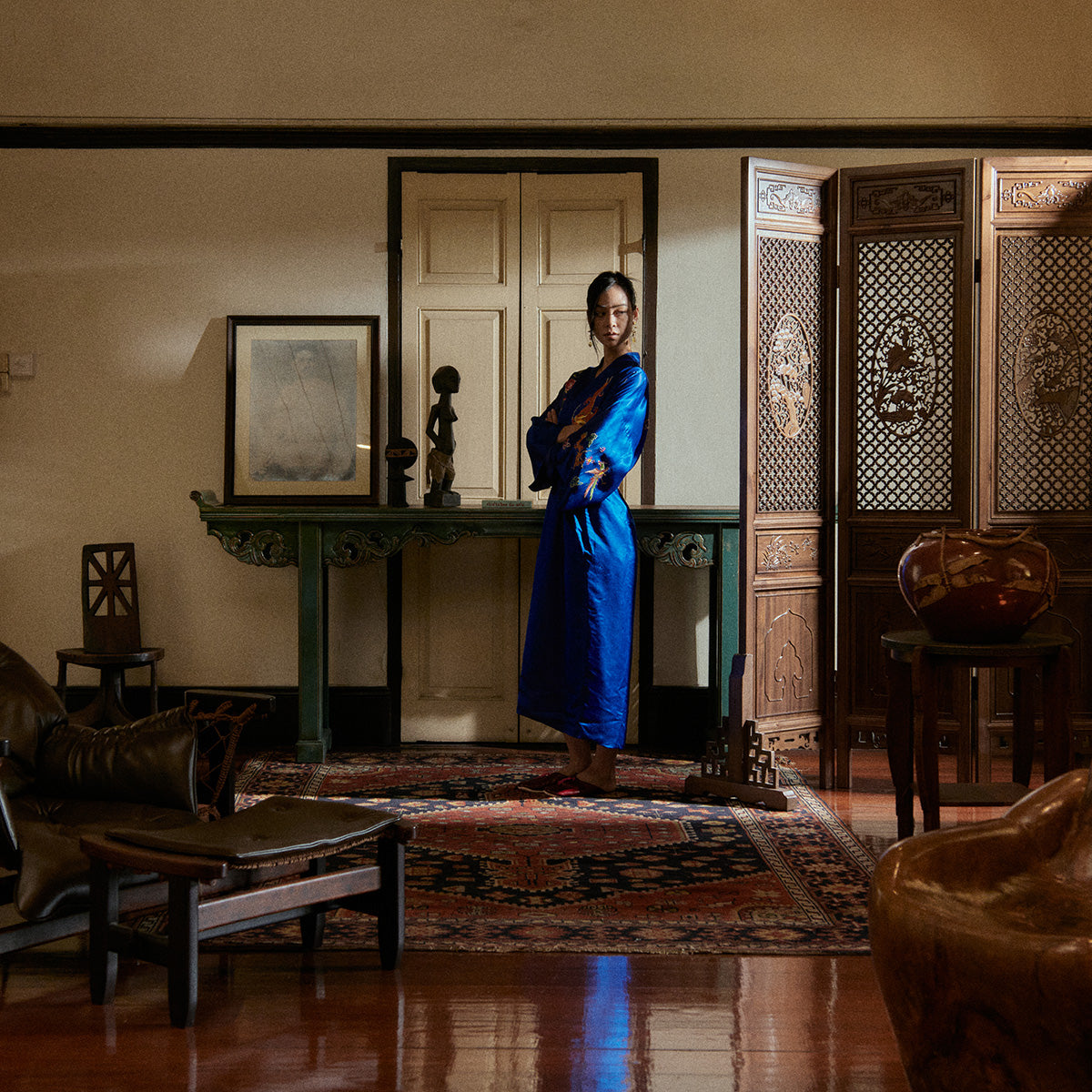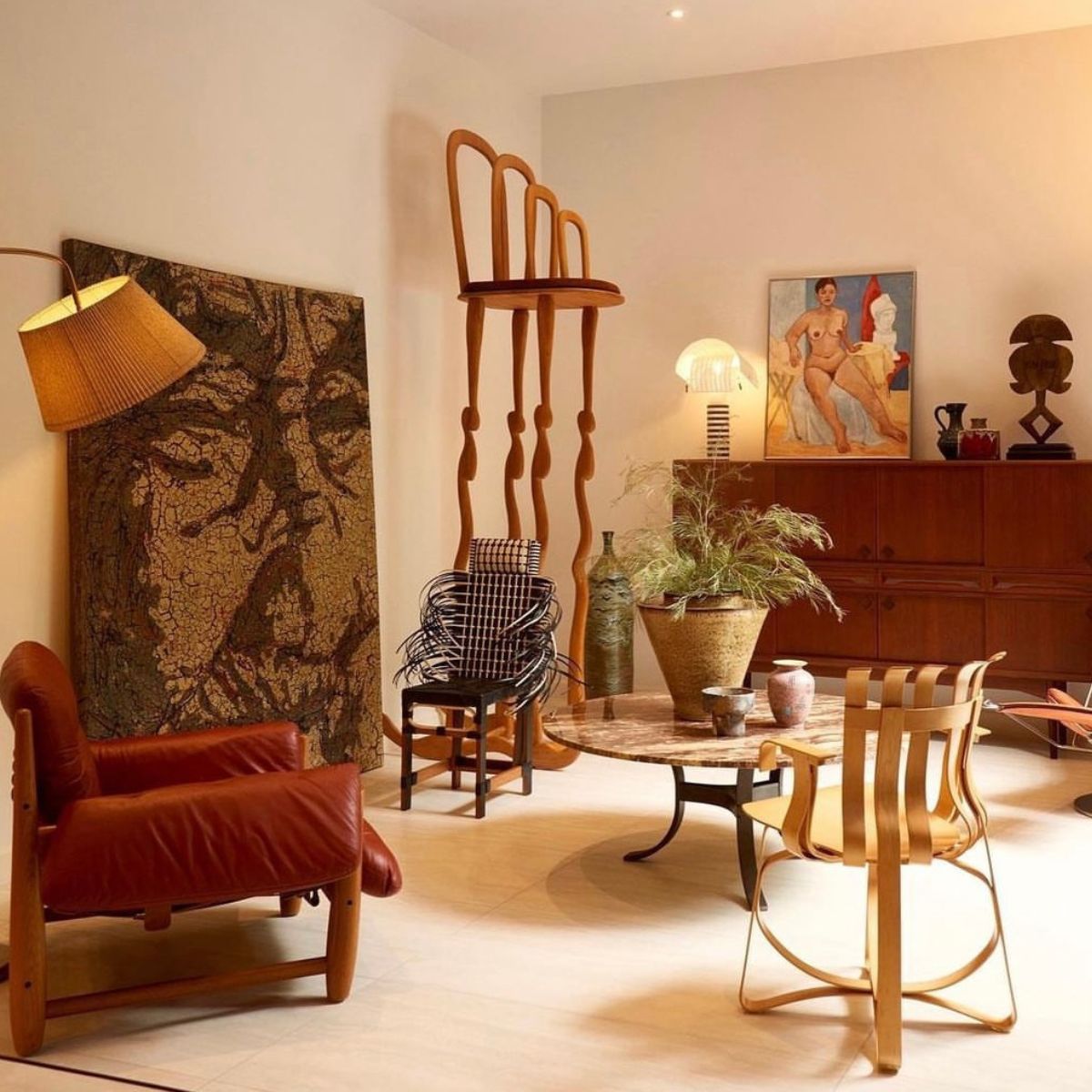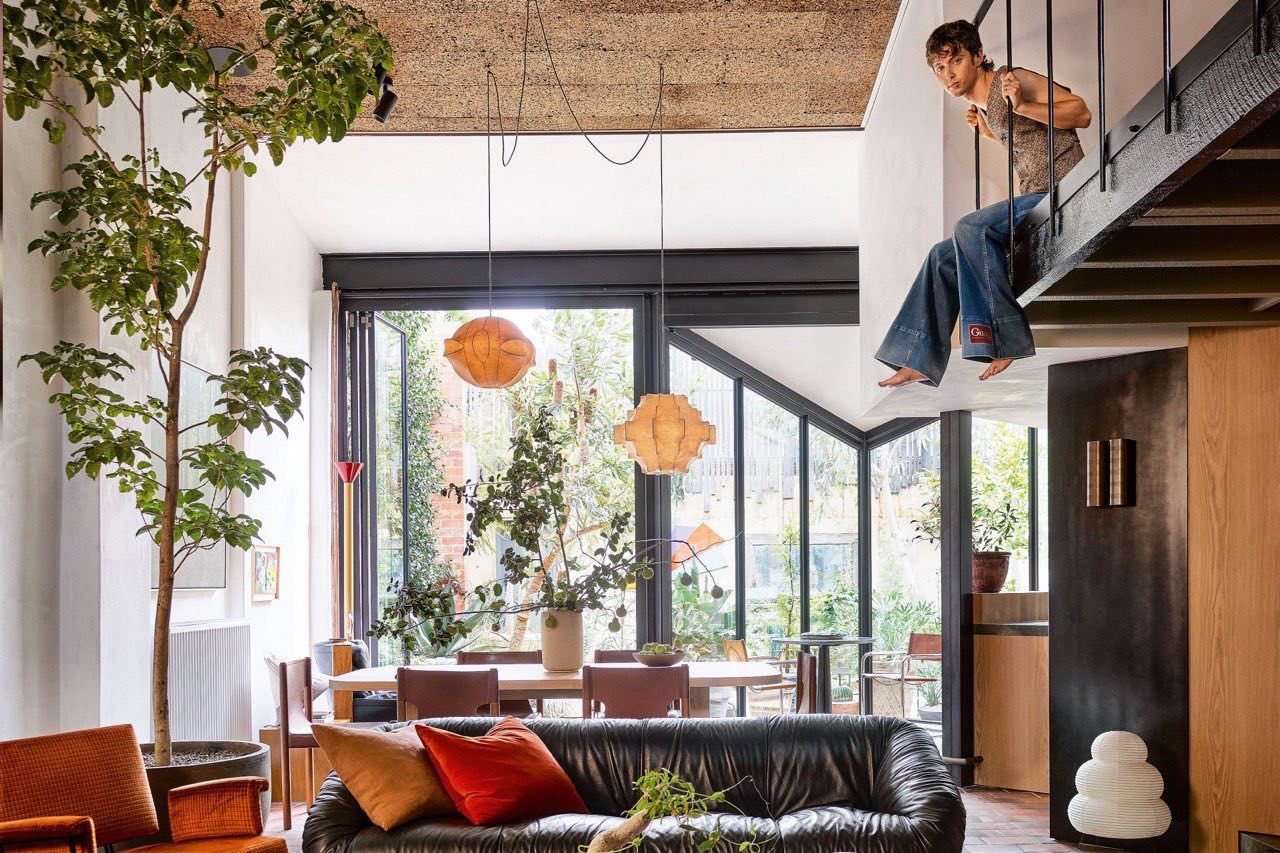By Nimasu Namsaren
When it comes to furnishing your space, choosing the right style can transform your home into a reflection of your personality, taste, and the stories you wish to tell. At Surround Living, we offer a carefully curated collection of high-quality, unique pieces that span across various interior design styles—each rich in history, craftsmanship, and character. We put together this introductory guide to help you navigate through the distinctive features and philosophies behind each style. By understanding the essence of these timeless aesthetics, you'll be equipped to select furniture and decor that complements and elevates your space, creating a home that is not only beautiful but deeply meaningful.

Antiques
History: Objects over 100 years old, typically pre-1920s, embody the complex craftsmanship and design principles of their era. The term "antique" generally applies to furniture that has maintained its original form, design, and materials over time.
Features: Antique furniture is often made from high-quality woods like oak, mahogany, or walnut and is characterised by intricate carvings, fine detailing, and timeless appeal. Items are often handmade or produced with techniques no longer in use today.
Philosophy: The philosophy behind antiques is a reverence for craftsmanship and history, where the wear and patina of age become an integral part of the object’s character.
Art Deco (1920s–1930s)
History: Emerging in the early 20th century, Art Deco was a glamorous, modern response to the opulence of the Victorian era and the industrial revolution.
Features: Geometric shapes, bold colours, luxury materials like chrome, glass, and lacquer, and motifs like zigzags and chevrons define this style.
Philosophy: Art Deco celebrates luxury, modernism, and the machine age, merging functional design with striking aesthetics, emphasising elegance and sophistication. The style was influenced by a variety of sources, including Cubism, Futurism, and Egyptian, African, and Asian art, blending opulence with streamlined, functional design.
Anglo-Indian (18th–19th Century)
History: A blend of British colonial influences and Indian craftsmanship, this style became
prominent during British rule in India.
Features: Rich woodwork, brass accents, intricate carvings, and lush fabrics such as silk and velvet. The style incorporates both European and Indian design elements, often combining classical European furniture with exotic Indian details.
Philosophy: The style represents the fusion of Eastern and Western cultures, highlighting the synthesis of western style simplicity and traditional Indian artistry.
Brutalist (1950s–1970s)
History: Originating in mid-20th-century architecture, Brutalism was a response to the sleekness of modernist design, emphasising raw materials and functional structures.
Features: Rough concrete, steel, and unpolished surfaces; a minimalist aesthetic with a focus on heavy, angular shapes and open spaces. Known for its raw, unapologetic use of materials and bold, sculptural forms, Brutalist furniture often features heavy, geometric shapes, rough textures, and minimal decoration.
Philosophy: Brutalism values honesty in design, where the materials and structure are exposed, reflecting a sense of austerity and anti-decorative purity. The essence of Brutalism, whether in architecture or furniture, is about emphasising the beauty of raw materials

Chippendale (1750s–1780s)
History: Named after English cabinetmaker Thomas Chippendale, this style flourished in the mid-18th century, blending Rococo, Gothic, and Chinese influences.
Features: Ornate, carved mahogany furniture with elegant curves, intricate detailing, and decorative motifs (acanthus leaves, flowers, scrolls, shells). One of the most recognisable features of Chippendale furniture is its leg designs. The legs often have a cabriolé (curved) shape, which was especially common in chairs and tables. The ball-and-claw foot (a carved foot resembling a ball gripped by a claw) is also famous and distinctive element in many Chippendale pieces.
Philosophy: Chippendale reflects the era’s appreciation for fine craftsmanship and refinement, where furniture was designed not only for function but as works of art. This style typically emphasises symmetry in its design, ensuring that the lines, carvings, and proportions of the piece are balanced and harmonious.
Contemporary (1980s–Present)
History: Contemporary furniture refers to furniture designed and produced in the present day or within the recent past, typically reflecting current trends, materials, and design philosophies. Contemporary furniture often emphasises simplicity, with clean, straight lines and uncluttered designs.
Features: This minimalist approach avoids excess decoration, focusing on functionality and streamlined aesthetics. Clean lines, open spaces, neutral colour palettes, and the use of modern materials such as glass, steel, and concrete. The style embraces minimalism but adapts to current design trends.
Philosophy: In contemporary furniture, functionality is a major priority. Furniture is often designed to maximise comfort and utility, making it suitable for modern living. Pieces may be multi-functional or adaptable to different spaces and purposes. There is also a significant emphasis on sustainable, eco-friendly materials and production methods.
Country (18th Century–Present)
History: Inspired by rural farmhouses and countryside living, this style emerged from the practical, homely aesthetic of rural life.
Features: While functional, country furniture focuses more on durability and practicality than ornate decoration. The furniture tends to showcase the beauty of wood, with visible grains, knots, and imperfections, which add to the rustic charm. The style emphasises comfort, with furniture often featuring softer cushions and upholstery (like cotton, linen, or floral fabrics).
Philosophy: It evokes a warm, homey atmosphere, with an emphasis on practicality, simplicity, and the use of natural materials. Country furniture has roots in various regional styles, but it generally evokes a sense of rural life, often with a focus on comfort and a connection to nature.
European / French (17th–19th Century)
History: This period spans several significant art and design movements, including Baroque,
Rococo, Neoclassical, and Louisian styles. French furniture from this era is known for its elegance, craftsmanship, and the influence of royal courts.
Features: Luxurious fabrics like silk and velvet, opulent furniture, ornate carvings, and intricate details. The colour palette includes rich, muted tones with gold accents.
Philosophy: French interior design is about creating grandeur, opulence, and timeless beauty,
emphasising elegance and sophisticated decor.
Mid-Century (1940s–1960s)
History: A design revolution influenced by post-war optimism, this style emerged from
Scandinavian and American design movements, focusing on simplicity and function.
Features: Clean lines, organic shapes, functional furniture, and the use of materials like wood, metal, and plastic. Iconic elements include minimalist forms and a blend of form and function. The mid-century era saw the incorporation of new, modern materials like plastic, fibreglass, steel, and glass, as well as the continued use of wood. These materials allowed for innovative, sleek, and functional designs that reflected the spirit of the time.
Philosophy: Mid-century modernism embraced industrial production, mass production, and the belief that good design should be available to the public. This enduring style exemplifies the optimism, innovation, and practicality of the mid-20th century.
Oriental (Ancient–19th Century)
History: Originating in China, Japan, and Southeast Asia, this style reflects the region’s rich cultural and artistic heritage. In many Oriental cultures, furniture wasn’t just a functional item—it also held spiritual or symbolic significance.
Features: Intricate woodwork, lacquered furniture, silk upholstery, and decorative elements like porcelain, bonsai, and Japanese screens.
Philosophy: Oriental design emphasises harmony with nature, balance, and intricate craftsmanship, showcasing spiritual and cultural significance in the furnishings.
Reproductions
History: These are modern reproductions of historical styles, ranging from ancient to more recent periods, designed to mimic the aesthetics of past eras.
Features: High-quality materials and craftsmanship replicate the original style but may incorporate modern techniques.
Philosophy: Reproductions make classic designs accessible while preserving historical beauty and style, blending nostalgia with contemporary functionality.
Retro (1950s–1980s)
History: Retro design is a nostalgic throwback to the mid-20th century, influenced by pop culture, advertising, and mass production.
Features: Bright colours, bold patterns, and quirky designs, often featuring mid-century modern furniture with playful, whimsical shapes.
Philosophy: Retro celebrates fun, individuality, and a sense of nostalgia, evoking a carefree, vibrant attitude toward design.
Rustic (18th Century–Present)
History: The term rustic is often used to describe pieces that feel earthy, natural, and unrefined, drawing inspiration from nature and rural craftsmanship. The style can range from early examples of log furniture and handcrafted wooden pieces to more modern country-chic interpretations.
Features: Exposed beams, rough-hewn wood, stone fireplaces, and earthy colours. Furnishings are often handcrafted and have a weathered, worn look.
Philosophy: Rustic design emphasises a return to nature and traditional craftsmanship, creating a warm, inviting atmosphere that feels both timeless and grounded.
Thai (Ancient–Present)
History: From the ancient periods, where furniture featured detailed carvings and symbolism tied to Buddhism and Thai royal life, to the modern era, where contemporary designs merge with traditional techniques, Thai design remains distinctive for its elegance, craftsmanship, and use of quality materials
Features: Intricate carvings, gold leaf detailing, tropical woods, silk, and bold colours. Furniture is often low-sitting, with ornate detailing.
Philosophy: Thai interiors reflect the country’s spiritual and cultural values, with an emphasis on harmony, balance, and craftsmanship. On Surround Living’s platform, “Thai” also refers to objects and pieces designed by Thai designers, with a focus on craftsmanship and honouring Thai materials and methods.
Traditional (17th–19th Century)
History: Traditional (17th–19th Century) furniture refers to the styles of furniture that were popular in Europe and America between the 17th and 19th centuries, reflecting the design and craftsmanship of various historical periods, including Baroque, Rococo, Georgian, Federal, and Victorian.
Features: Rich woods, formal symmetry, elegant furnishings, and classic patterns such as florals and stripes. The colour palette is often subdued, with deeper hues like burgundy, navy, and gold.
Philosophy: Traditional style evokes a sense of permanence and formality, with an emphasis on comfort and a respect for timeless design principles.
Victorian (1837–1901)
History: This period of design was marked by a blend of luxurious, ornate, and eclectic styles, reflecting the changes in society, culture, and industry during the Victorian era. Sub styles include Gothic and Rococo revival, Eastlake and Aesthetic Movement.
Features: Dark wood furniture, ornate details, heavy drapery, floral patterns, and lavish textiles like velvet.
Philosophy: Victorian design celebrates luxury, opulence, and intricate craftsmanship, often invoking a sense of nostalgia and romanticism. It was an era marked by a passion for decoration, a fascination with history and nature, and an emphasis on comfort.
Vintage (1920s–1970s)
History: The term vintage refers to items that are at least 20 years old but generally not yet considered antique (which typically refers to items older than 100 years). Vintage furniture from the 1920s–1970s is valued for its timeless designs, high-quality craftsmanship, and ability to reflect the cultural and technological trends of the 20th century.
Features: Items with a patina, aged finishes, and nostalgic elements such as retro colours, patterns, and materials like enamel and chrome.
Philosophy: Vintage design values character and history, focusing on the emotional connection to past eras and celebrating the uniqueness of aged objects.

As you explore the rich history and philosophy behind each of these timeless design styles, remember that the pieces you choose for your home are more than just functional—they are reflections of artistry, culture, and personal expression. By understanding the essence of each style, you’ll be better equipped to select pieces that resonate with your own tastes and create a space that feels uniquely yours. Explore Surround Living’s “Shop by Style” section to discover curated pieces where exceptional craftsmanship meets distinctive design—bringing your vision to life.




